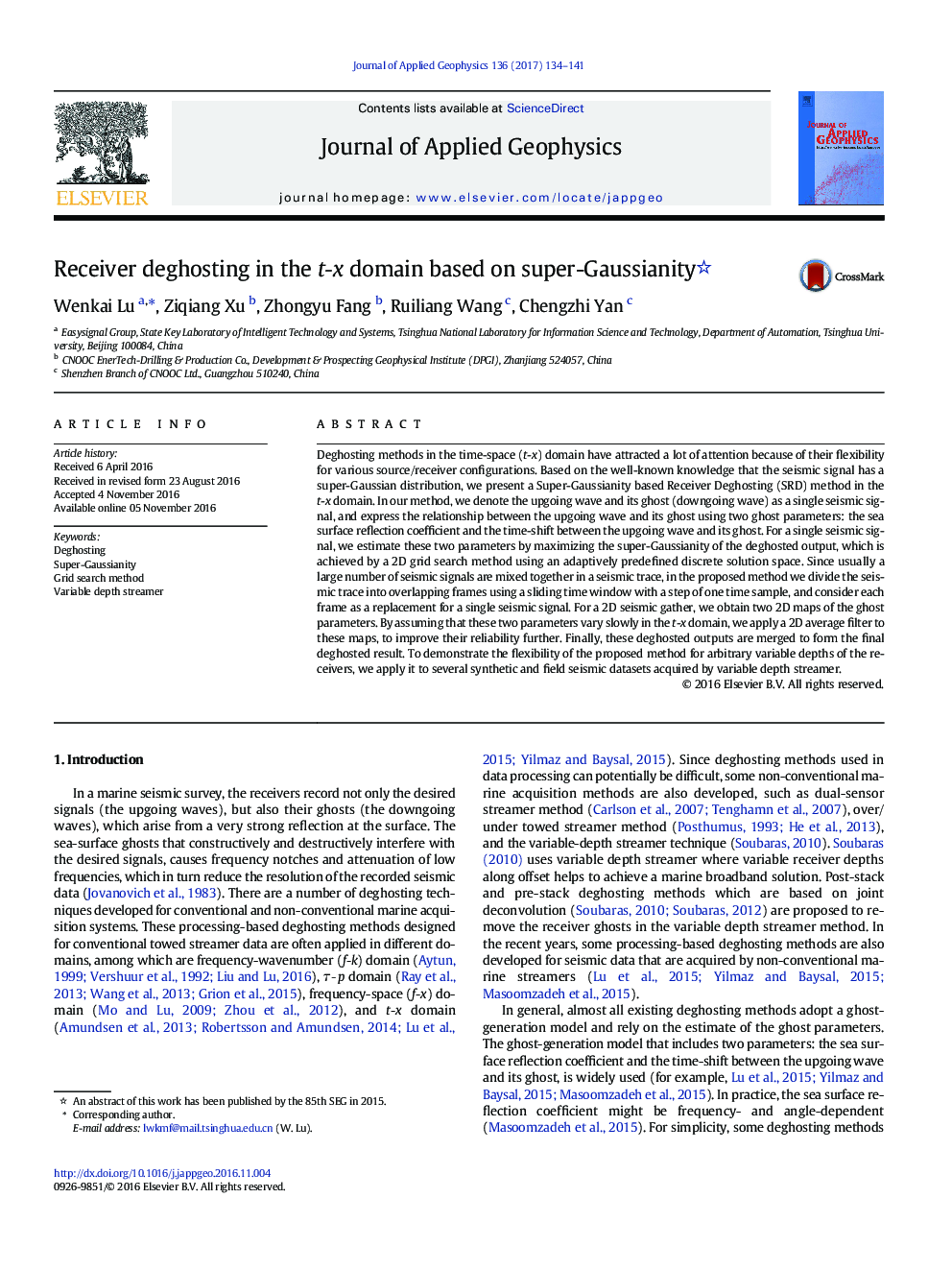| Article ID | Journal | Published Year | Pages | File Type |
|---|---|---|---|---|
| 4739678 | Journal of Applied Geophysics | 2017 | 8 Pages |
•We propose a Super-Gaussianity based Receiver Deghosting (SRD) method in the t-x domain.•The SRD is flexible for various source/receiver configurations.•The SRD obtains reliable estimations of the ghost parameters automatically.•The SRD introduces an adaptive predefined discrete solution space for 2D grid search method.•The SRD adopts a 2D average filter to improve the estimations of the ghost parameters.
Deghosting methods in the time-space (t-x) domain have attracted a lot of attention because of their flexibility for various source/receiver configurations. Based on the well-known knowledge that the seismic signal has a super-Gaussian distribution, we present a Super-Gaussianity based Receiver Deghosting (SRD) method in the t-x domain. In our method, we denote the upgoing wave and its ghost (downgoing wave) as a single seismic signal, and express the relationship between the upgoing wave and its ghost using two ghost parameters: the sea surface reflection coefficient and the time-shift between the upgoing wave and its ghost. For a single seismic signal, we estimate these two parameters by maximizing the super-Gaussianity of the deghosted output, which is achieved by a 2D grid search method using an adaptively predefined discrete solution space. Since usually a large number of seismic signals are mixed together in a seismic trace, in the proposed method we divide the seismic trace into overlapping frames using a sliding time window with a step of one time sample, and consider each frame as a replacement for a single seismic signal. For a 2D seismic gather, we obtain two 2D maps of the ghost parameters. By assuming that these two parameters vary slowly in the t-x domain, we apply a 2D average filter to these maps, to improve their reliability further. Finally, these deghosted outputs are merged to form the final deghosted result. To demonstrate the flexibility of the proposed method for arbitrary variable depths of the receivers, we apply it to several synthetic and field seismic datasets acquired by variable depth streamer.
